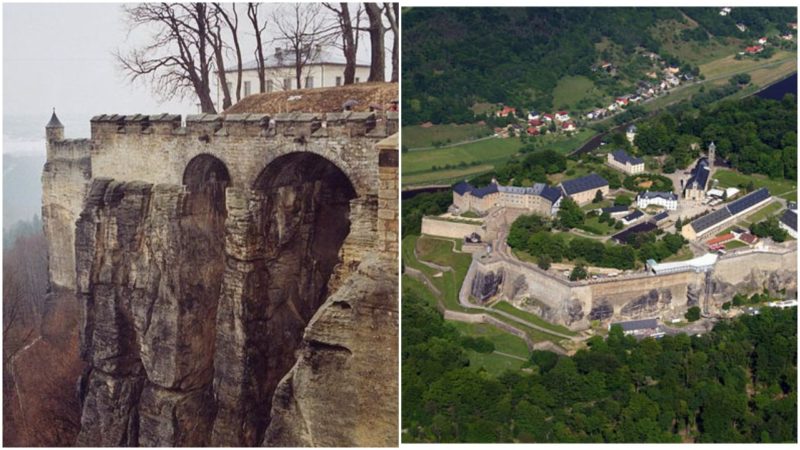Königstein Fortress, or the Saxon Bastille as it is often called, stands on top of a hill in the town of Königstein, nearby to Dresden in Saxony, Germany.
It is one of the largest hilltop fortresses in Europe and is mentioned in a written account by Wenceslaus I of Bohemia, the One-Eyed King, in 1233. The name Königstein literally translates as ‘King’s Rock.’
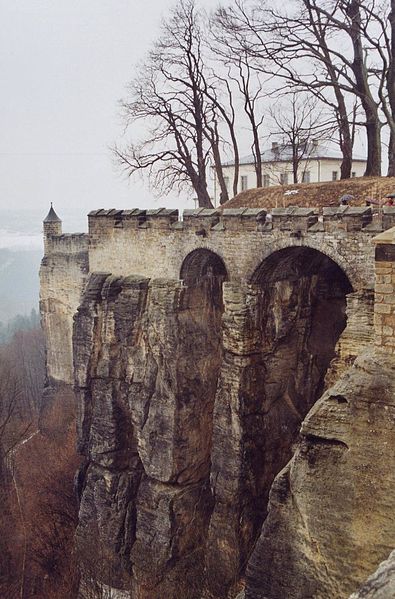
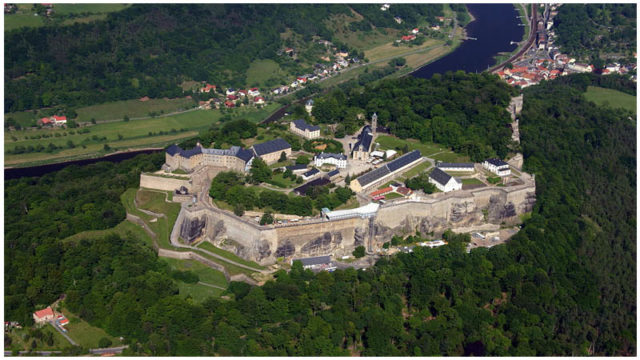
The whole region was divided into two great kingdoms: the Bishopric of Meissen and the Kingdom of Bohemia. The Kingdom of Bohemia owned the castle.
The river Elbe ran close to the castle. The river was an important trade route, and this allowed the castle to further expand as it passed from one king to the next. The castle had many different roles over the years, and at one point it was even used as a monastery.
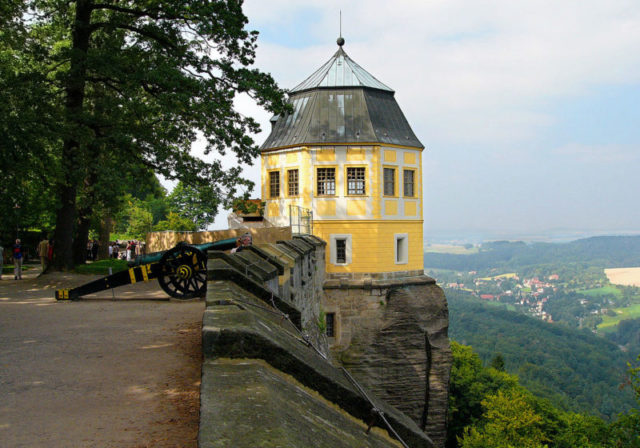
According to historians, the castle has its roots in the 12th century. The oldest part of the castle that remains today is the chapel, which was erected at the start of the 13th century.
In 1569, the castle received its 500-feet-deep well. Bored into rock, it was an admirable feat of engineering at the time and is the second deepest well in Europe. Until that point in the castle’s history, rainwater had been collected and stored in cisterns.
During the reign of Christian I, Elector of Saxony, the castle was considered to be one of the toughest fortifications in the state. Under his rule, new buildings were constructed, including the gatehouse and armory.
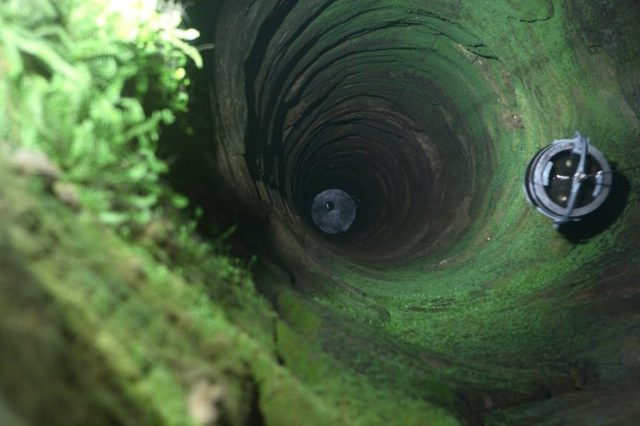
The castle was further extended, once from 1619 to 1681 and again from 1722 to 1725. During the 18th century, the giant Königstein Wine Barrel was constructed in the castle by coopers working under Johann Friedrich Böttger, on the order of Augustus II the Strong. The barrel had an enormous capacity of 66,000 gallons.
The castle continued to be modified and expanded. In 1816, St. John’s Hall was converted into an armory and in 1819 the provision store was converted to barracks. In 1871, the castle became part of the German Empire’s fortification system. This meant that the castle was now equipped with battery ramparts.
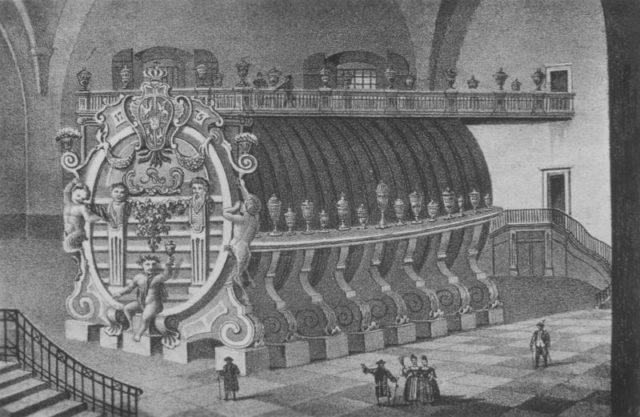
During the 20th century, the castle was used as a prison. It was the most well-known state prison in Saxony.
Some of its more notable prisoners included Johann Friedrich Böttger, an alchemist who, together with Ehrenfried Walther von Tschirnhaus, is credited as the first European to discover the secret of the creation of hard-paste porcelain in 1708; German painter Thomas Theodor Heine; and playwright Frank Wedekind.
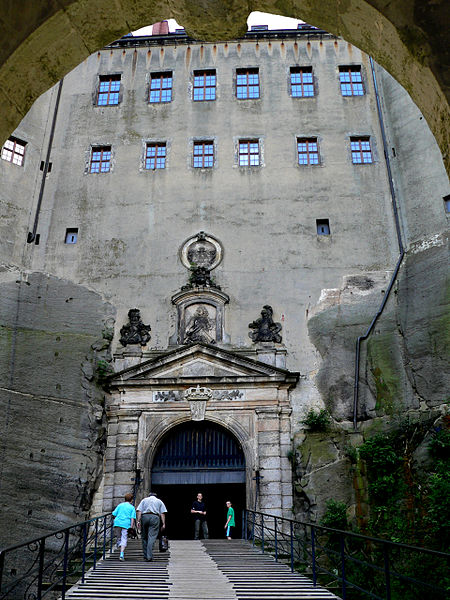
During the First and Second World Wars, the castle was converted to a prisoner-of-war camp. Once World War II was over, the Soviets took control of it and used it as a military hospital. Some years later, on May 29, 1955, it was opened as a military history museum, attracting people from far and wide.
In 1970, it was equipped with a lift to help tourists to easily reach the castle. Another was installed in 2005, which offers a panoramic view of the surroundings. The new lift reaches a total height of 140 feet and cost $1.7 million to build. A total of $46 million was invested from 1991 to 2010 to renovate and preserve the castle.
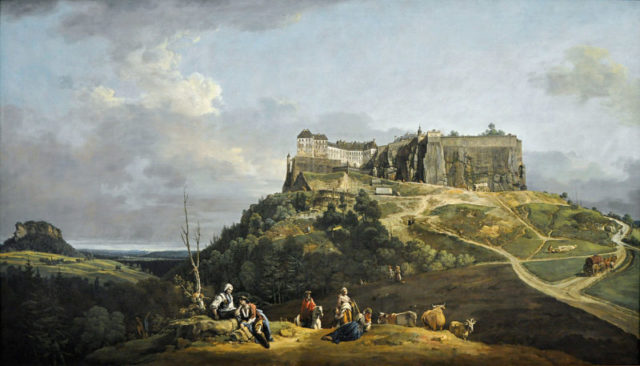
Given its stunning architecture and picturesque location, the castle has been a source of inspiration to a great number of artists over the years. Bernardo Bellotto created a series of five paintings inspired by the castle. Four of the paintings reside in public collections in Britain, and the fifth, The Fortress of Königstein from the North-West, is displayed in the National Gallery of Art, Washington, D.C.
